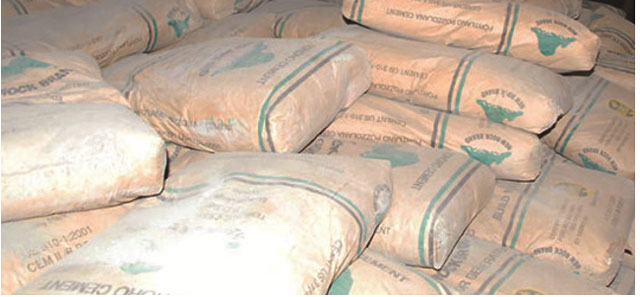
New expansions could lead to a drop in cement prices
Kampala, Uganda | ISAAC KHISA | The good news for Uganda’s cement industry is that it is headed towards increase in production in the next few months. The challenge, however, is that it could lead to a decline in prices due to glut amidst low demand.
Lafarge Group’s Hima Cement plans to switch on its new production in Tororo in the first quarter of this year, with a capacity of one million tonnes, increasing its overall cement production in the country to 1.8million tonnes per annum.
Its closest rival, Tororo Cement, is also expecting an increase in its production capacity from the current 1.9million tonnes to three million tonnes per annum once the expansion of plant is completed while Kenya’s National Cement is investing US185million on a new one million tonne per annum plant in the same locality, with production expected later this year.
With all these new plants expected to go live this year means that the country’s cement production will increase from the current 3.6million tonnes to 6.8million tonnes per annum amidst demand that stands at merely 2.4million tonnes per annum.
This comes barely two years since Kampala Cement started production at its plant at Namataba, along Jinja-Kampala highway with the capacity of one million tonnes per annum.
Executives in the industry, however, say there’s no problem. They cite prospective growth in the construction industry as government rolls out various infrastructural projects including those in the oil and gas sector ahead of production in 2020 as key drivers for their latest expansion.
“Looking at the projection, we are going to have a construction boom once investments in the oil industry start and the subsequent oil flows. Towns are going to sprout up and more structures will be constructed,” said, Allan Ssemakula, the chief commercial director at Hima Cement.
He says the firms are also anticipating increased demand for the products in the region especially South Sudan once it experiences relative peace, western Kenya, Rwanda and the eastern Democratic Republic of Congo.
Data from Uganda Bureau of Statistics shows that Uganda’s cement export earnings grew from US$94million (Shs337.9bn) in 2011 to US$106.8million (Shs383bn) in 2012, with majority of the products destined to South Sudan and the eastern Democratic Republic of Congo before reducing to as low as US$60.8millions in 2016 due to conflicts in the two states.
This comes at the time cement prices in Uganda are already falling from Shs33, 000 in 2016 to as low as Shs28, 000 per 50-kg bag at the moment, representing a 15% drop citing competition in the industry.
Latest studies depicts the industry as having a bleak future as competition tightens owed to entry of new firms and expansion of the existing ones, a scenario that will result to price wars and fall in profit margins.
Similarly, imports from cement producers elsewhere in the region could also weaken Ugandan producers, with firms in Tanzania, Kenya and Ethiopia all investing heavily in scaling up supply even as cheap imports continue to flood the region following the lowering of duty on cement imports from non-East African Community countries from 35 % to 25% in 2015.
For instance, Hima Cement’s parent company, Bamburi Group in Kenya is set to boost its production capacity by 900,000 tonnes annum pushing the total capacity to 3.2 million tonnes in its two plants in Mombasa and Athi River.
The additional production, expected to start mid this year, will come after the completion of a Vertical Cement Mill in its Athi River plant, the first of its kind in the country to use this technology in cement manufacturing.
Nigeria’s Dangote Cement is currently selling its commodity in the region with imports from the neighbouring Ethiopia and Tanzania. It is also contemplating setting up a plant in Kenya in 2021 as it reviews its manufacturing plan to build two plants in the country instead of one but with a capacity of 3 million tonnes of cement per annum.
Already, a section of cement firms are feeling the pinch of stiff competition as supply increases amidst low demand. In 2016, the Nairobi Securities Exchange-listed firm, Bamburi Group, which also owns Hima Cement in Uganda, recorded Kshs5.89 billion (Shs 204bn) net profit, a 0.3% rise over the profit recorded during a similar period in the previous year.
The company’s turnover fell from Kshs39.2 billion (Shs1.36trillion) to Kshs38 billion (Shs1.31trillion) during the same period under review citing lower demand for its products, despite having implemented cost-management measures in Uganda and Kenya.
However, Bamburi reaped the benefits of mega infrastructural projects in the region with rising demand from this market segment in Kenya, Uganda and Rwanda.
Tanzania’s Tanga Cement Company Ltd, which sells the Simba brand, saw its net profit halved to US$1.85 million (Shs 6.65bn) from US$3.63 million (Shs13bn) a year earlier citing entry of new firms and reduction in government spending on infrastructure development.
 The Independent Uganda: You get the Truth we Pay the Price
The Independent Uganda: You get the Truth we Pay the Price



